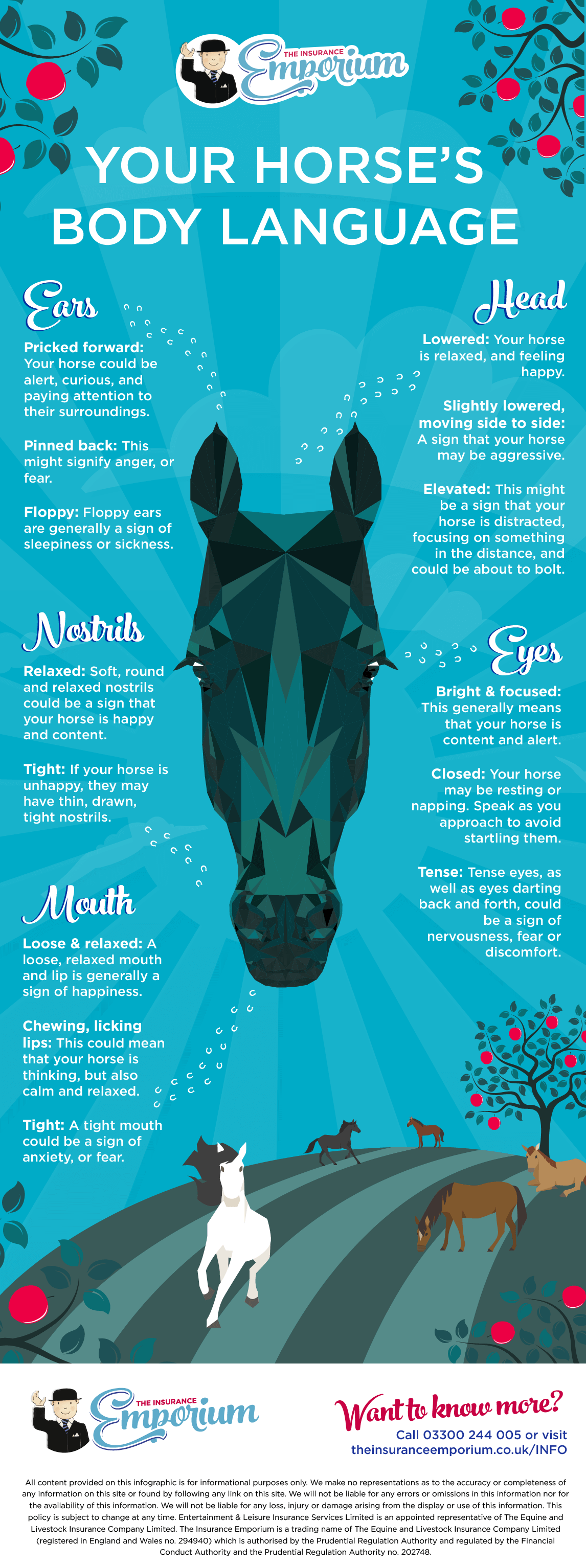
Horses are amazing creatures! They’ve been used to carry people and pull vehicles throughout history and have made great companions for thousands of years. But horses are also complex creatures, and it can still be difficult to know what your equine friend is thinking and how they are feeling. That’s why we’ve put together this guide, to help you better understand your horse!
Head
The way your horse holds its head is an easy way to determine how they may be feeling. If their head is lowered, they may be relaxed and feeling happy, while moving their head side to side is a sign of aggression. If your horse’s head is elevated, they might be distracted or focusing on something in the distance, and could be about to bolt.
Ears
Horses’ ears generally point towards whatever they’re focusing on, but they can provide a good indication of how they’re feeling. Pricked forward ears could signify a horse who is alert, curious and paying attention to their surroundings. Pinned back ears might be a sign of anger or fear, while floppy ears generally mean your horse is sleepy or feeling unwell.
Eyes
A horse’s eyes can be difficult to read, but can go some way in revealing how they’re feeling. If the eyes are bright and focused, your horse is generally content and alert. Meanwhile, tense eyes, as well as eyes that dart back and forth, could be a sign of nervousness, fear or discomfort. If your horse’s eyes are closed, they may be resting or napping. Make sure you speak as you approach, to avoid startling them.
Nostrils
The nostrils provide another easy indication of your horse’s comfort. Soft, round and relaxed nostrils could be a sign that your horse is happy and content. If your horse is unhappy, they’re more likely to have thin, drawn, tight nostrils.
Mouth
A loose, relaxed mouth and lip is generally a sign of happiness in horses. If your horse is chewing or licking their lips, this could mean that your horse is thinking, calm and relaxed, while a tight mouth could be a sign of anxiety or fear.
Tail
Unlike dogs, if your horse’s tail is wagging, they’re generally agitated, or in some form of discomfort. When they’ve got their tail tucked between their legs, this could be a sign of fear or apprehension, while if they’re holding their tail high, this could be a sign of pleasure. Your horse might be happy, or excited!
You can learn a lot about your horse through their body language! Paying attention to how they’re feeling can help you make sure they’re as healthy and happy as possible. It can also give you an early indication that something is not right. For these times, you might want to consider horse insurance. At The Insurance Emporium, our horse insurance policies allow you to tailor your insurance to your needs, with Optional Benefits like Vet’s Fees. You could even get up to 30% discount^ on a new policy! Trot on down to The Insurance Emporium to find out more.
The 30% discount is made up of 20% Introductory Discount plus 10% Multi-horse Discount (if appropriate). The Introductory Discount is available for the first 12 premium payments on lunar and calendar monthly policies or one premium payment on annual policies.
All content provided on this blog is for informational purposes only. We make no representations as to the accuracy or completeness of any information on this site or found by following any link on this site. We will not be liable for any errors or omissions in this information nor for the availability of this information. We will not be liable for any loss, injury or damage arising from the display or use of this information. This policy is subject to change at any time.


